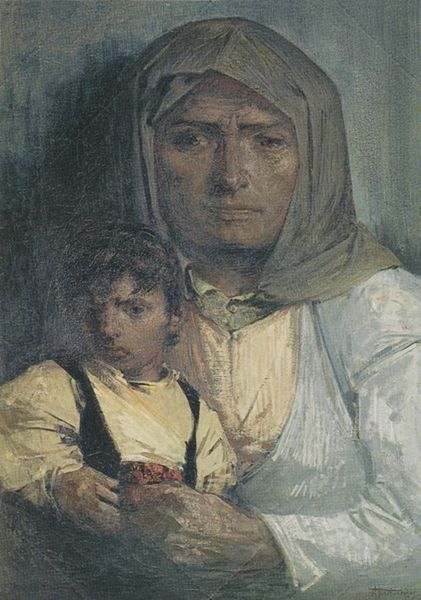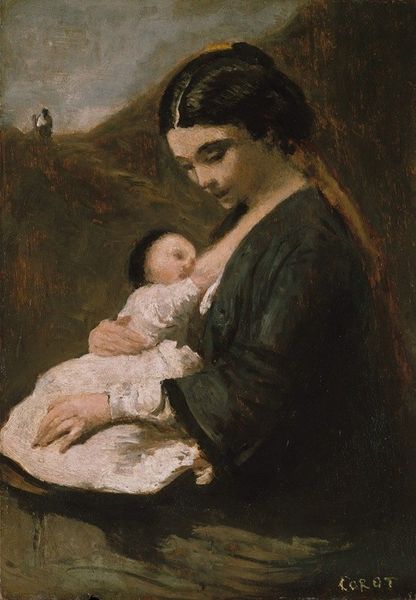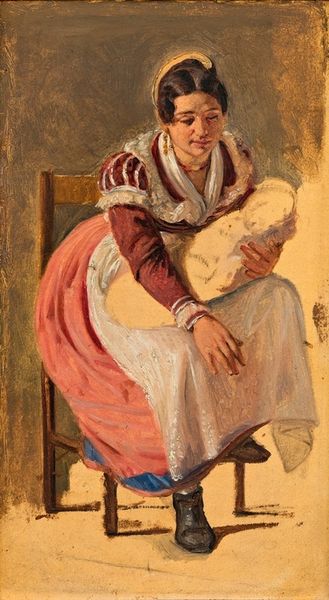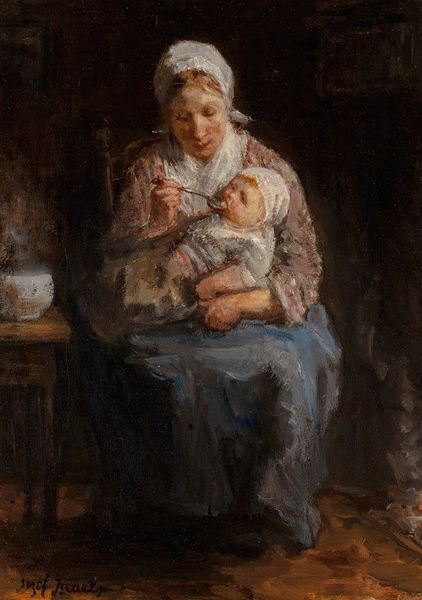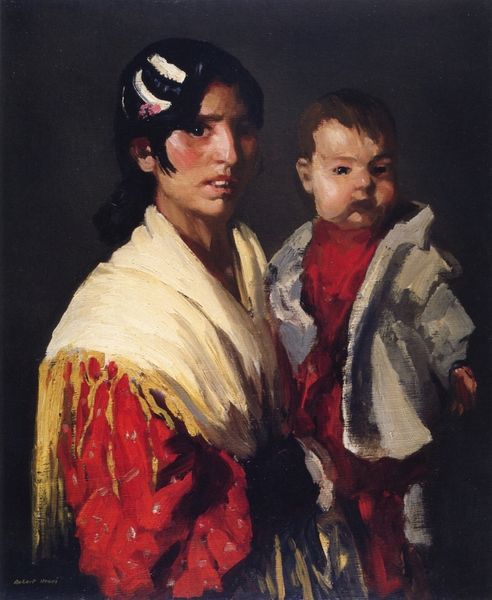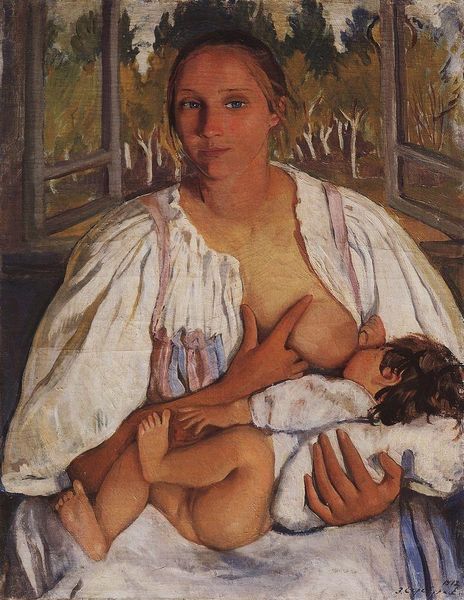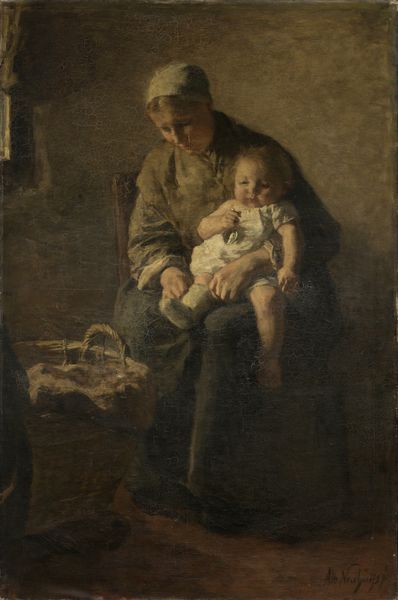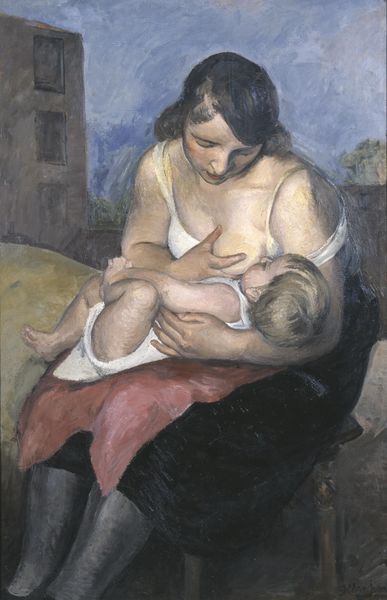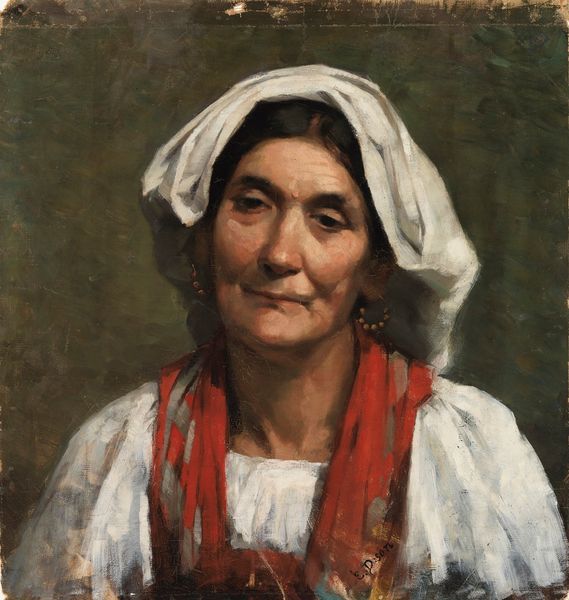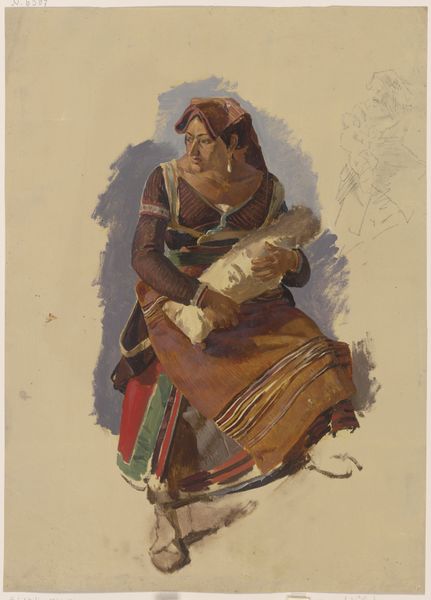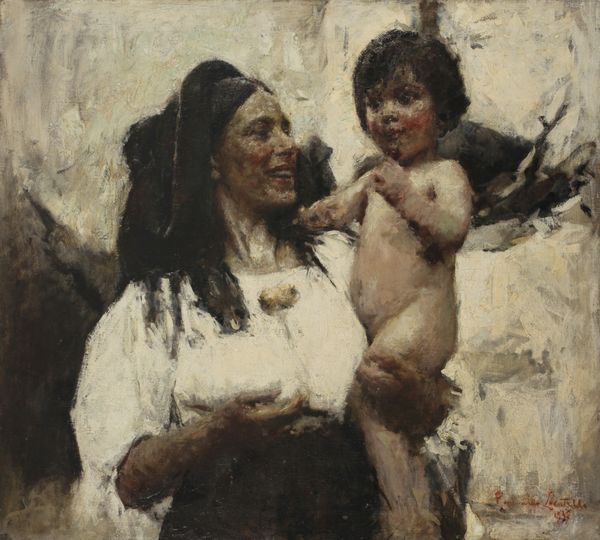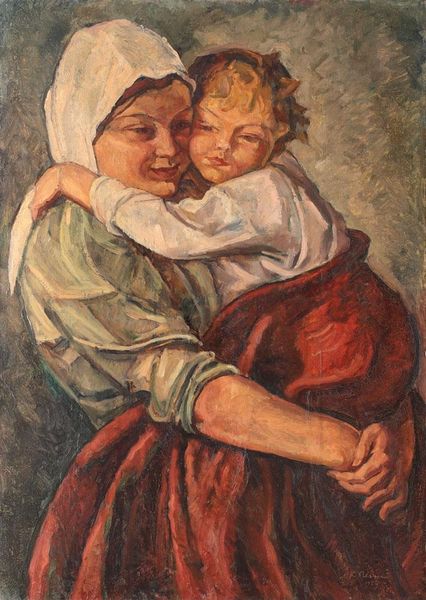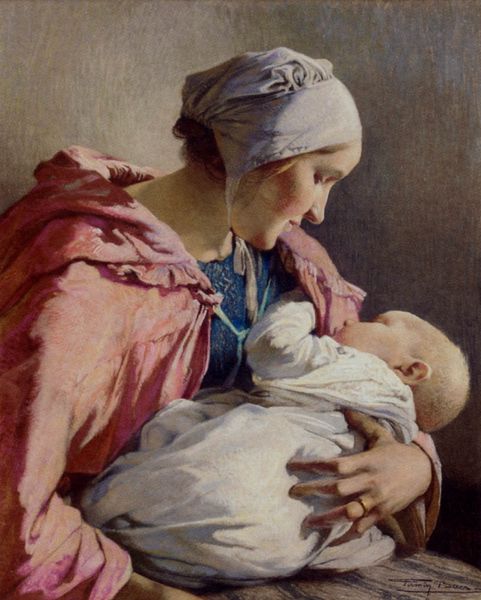
painting, oil-paint
#
portrait
#
figurative
#
portrait
#
painting
#
oil-paint
#
genre-painting
#
academic-art
#
realism
Copyright: Public Domain: Artvee
Curator: The penetrating gaze in Léon Bonnat's "The Bandit's Wife," from 1872, really draws me in. There is such defiance mingled with sorrow in those eyes. Editor: It's definitely a compelling face. For me, it’s the application of paint that's most immediately striking. Look how roughly the fabric of her dress and headdress are rendered, compared to the more polished treatment of the face. Curator: Absolutely, and consider the loaded symbolism in that contrast. The fine pearls versus the rough cloth; a signifier of the woman's circumstances. Bonnat offers us this almost archetypal image of womanhood under duress. It touches upon enduring narratives of sacrifice and resilience. Editor: I think that reading could be plausible, but one might also propose an economic view: Bonnat was primarily concerned with portraying wealth as reflected in these material differentiations and probably unconcerned about abstract symbolism. In truth, though, I believe it would be intriguing to understand the origins of the fabric. What materials and dyes were accessible during this period? Curator: Perhaps the bright, almost defiant whiteness of her clothes against the somber background could symbolize inner purity in the face of adversity? The gaze carries immense weight—a refusal to be defined solely by circumstance. Editor: I agree that there is weight to her stare. And how that somber background helps to push her forward! However, I can’t ignore how the quick, loose brushstrokes also create a sense of urgency, perhaps mirroring the instability of her world. It’s efficient—but what statements can be derived from the process, and in this setting? Curator: So, for you, the raw materiality serves as both visual device and historical artifact, speaking of broader social realities and production processes. It adds another layer to consider when interpreting this portrait of defiance and endurance. Editor: Exactly. When you focus on material as opposed to intent, there is always a story to tell! It might not always be a popular perspective, but it helps in viewing art in a novel way. Curator: I think both interpretations coexist—material realities shaping our understanding of the deeper symbolic registers at play in a work like "The Bandit's Wife". Thank you for enriching my experience here today! Editor: Likewise. Examining both form and context makes viewing art an even more dynamic, holistic journey!
Comments
No comments
Be the first to comment and join the conversation on the ultimate creative platform.
